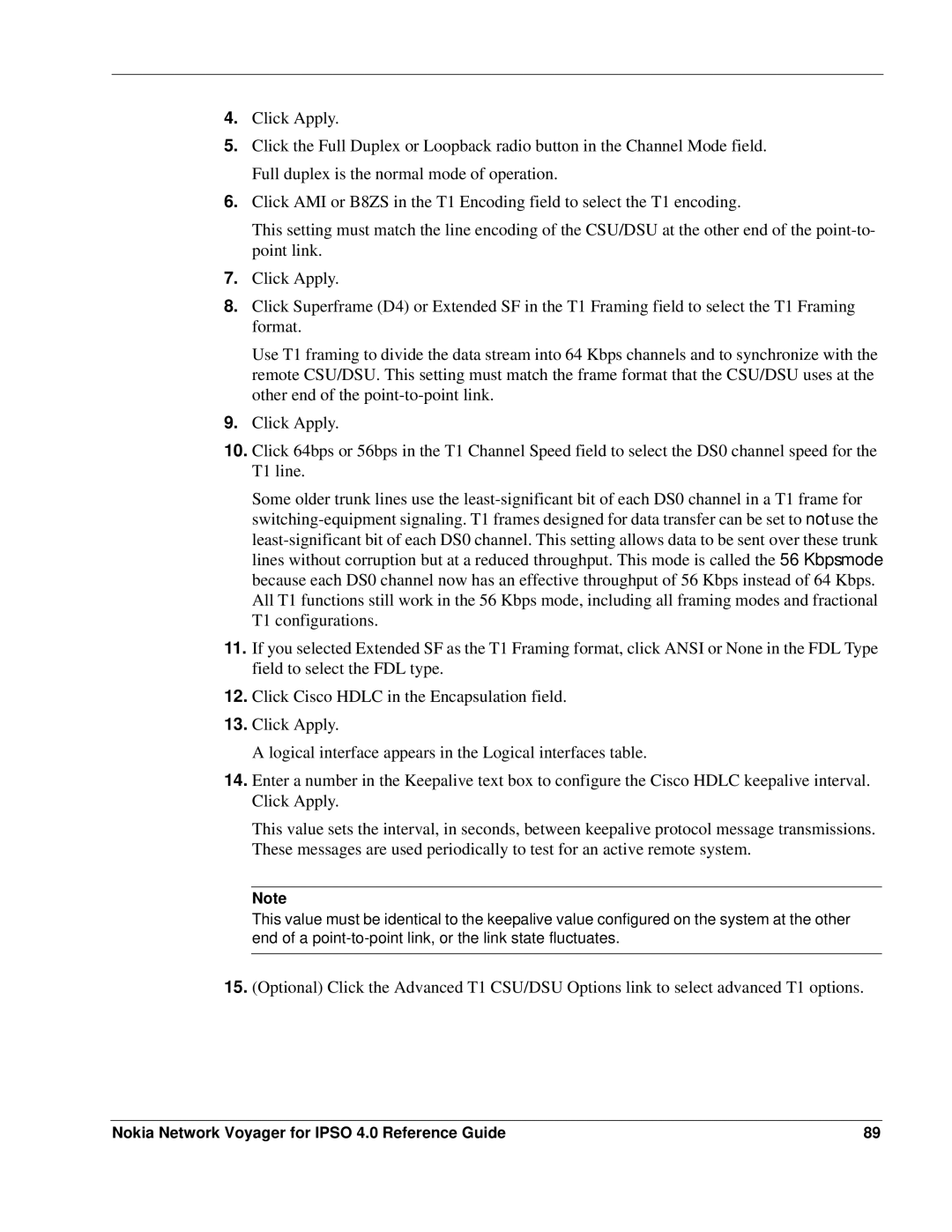
4.Click Apply.
5.Click the Full Duplex or Loopback radio button in the Channel Mode field. Full duplex is the normal mode of operation.
6.Click AMI or B8ZS in the T1 Encoding field to select the T1 encoding.
This setting must match the line encoding of the CSU/DSU at the other end of the
7.Click Apply.
8.Click Superframe (D4) or Extended SF in the T1 Framing field to select the T1 Framing format.
Use T1 framing to divide the data stream into 64 Kbps channels and to synchronize with the remote CSU/DSU. This setting must match the frame format that the CSU/DSU uses at the other end of the
9.Click Apply.
10.Click 64bps or 56bps in the T1 Channel Speed field to select the DS0 channel speed for the T1 line.
Some older trunk lines use the
11.If you selected Extended SF as the T1 Framing format, click ANSI or None in the FDL Type field to select the FDL type.
12.Click Cisco HDLC in the Encapsulation field.
13.Click Apply.
A logical interface appears in the Logical interfaces table.
14.Enter a number in the Keepalive text box to configure the Cisco HDLC keepalive interval. Click Apply.
This value sets the interval, in seconds, between keepalive protocol message transmissions. These messages are used periodically to test for an active remote system.
Note
This value must be identical to the keepalive value configured on the system at the other end of a
15.(Optional) Click the Advanced T1 CSU/DSU Options link to select advanced T1 options.
Nokia Network Voyager for IPSO 4.0 Reference Guide | 89 |
